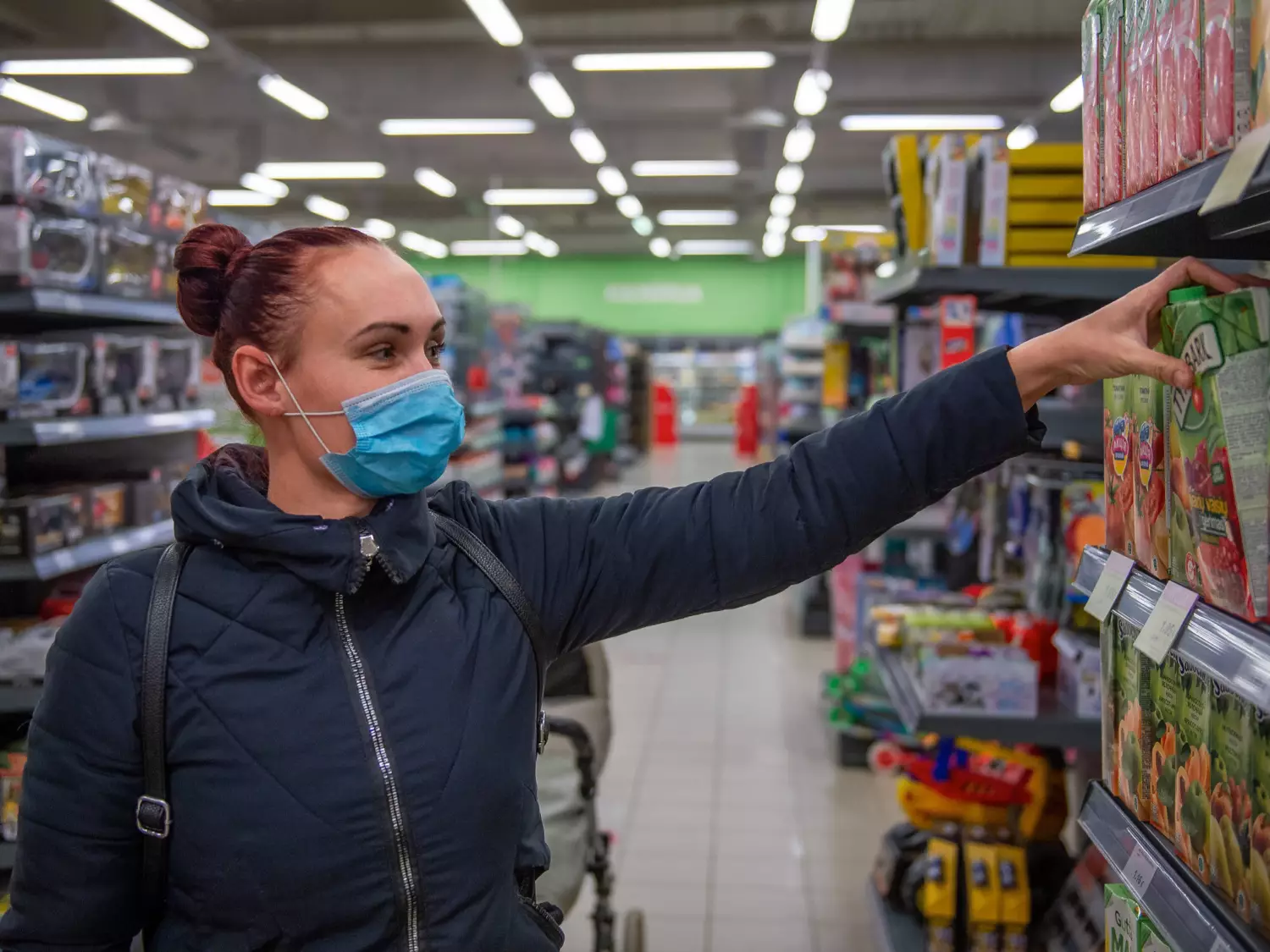Insights from the 2021 State of Consumer Behavior Report
The change in customer behavior under the influence of COVID-19
Snabble is always looking for new approaches to optimize the Scan & Go platform. This is being done with two essential stakeholders in mind. First, the self-checkout experience should provide real value to our users. This includes, for example, saving time by avoiding the checkout line, a resulting relaxed shopping experience, and a constant cost overview of the products in the virtual shopping cart. In addition, retailers and store employees should be given the simplest possible overview of the scan-&-go process in their stores. The checkout supervisor gives staff both insights into the shopping carts of customers making purchases and control at the checkout.
The pandemic has created a new dynamic in retail. Many processes have to be rethought. The impact of this situation on the customer is difficult to predict. Therefore, the State of Consumer Behavior Report 2021 gives a good insight into customer behavior and possible changes due to the pandemic.
The State of Consumer Behavior Report 2021
The State of Consumer Behavior Report 2021 looks at the reasons for customers to visit a store or location in person. Valuable insights can be gleaned from what in-location experiences customers value. The report summarizes the key findings as follows:
- 46% of respondents, given a choice between online and offline purchases, prefer in-store personal contact. Compared to the previous year's report, this represents a decrease of 9 %.
- 33% of respondents want to see and touch products while shopping. 26 % enjoy the overall experience of shopping in person. A physical interaction with the product is therefore still highly relevant.
- The influence of COVID-19 is indispensable. 40% of respondents have visited physical stores more irregularly since the pandemic.
- Failing to visit a store negatively impacts market loyalty. 48% of respondents said they have replaced products with online alternatives from competitors. 25% confirmed that they switch product brands more frequently than before.
- The response from retailers is clear. Brands are doubling down on their commitment to improving the offline customer experience. This is confirmed by nearly 30% of respondents who say that on-site customer service has improved over the past year.
- If customers experience a positive offline experience, it has a big impact:
- 90% say they would visit the store again
- 61% would spend more money in a store with a positive connotation
- 65% of consumers confirm that they are likely to engage with the brand online
The age of respondents is 65% between 25 and 45, with a slightly higher proportion of women than men - a 58% to 42% ratio.
A look inside the customer's mind
Advantages of offline shopping
As can be seen from the facts presented at the beginning, just under half of consumers prefer to store physically in a store. It is important to understand the reasons for this. The survey shows that customers want to physically interact with products. In addition, respondents confirm that the overall experience in a store cannot be replaced by online shopping. In a store, customers do not have to wait for products to be delivered, but can take them away directly. Sociologically, the shopping experience provides a form of community that online experiences cannot. Shopping in a store is part of an irreplaceable habitual community routine.
The Impact of COVID-19
That the pandemic is affecting consumer behavior is not a groundbreaking finding. In this survey, therefore, the focus falls on the change in consumer habits. As addressed earlier, 40% of respondents reduced their physical visits to a store. This can be attributed to health concerns and store closures. However, nearly 14% of respondents should be highlighted. These increased the frequency of on-site visits. This was due to a desire for the in-person experience and social connection.
In-store experience management is gaining importance. Retailers cannot rely on a vaccine and extensive viral control to abruptly increase customers' physical store visits. Only half of respondents said they would visit stores more frequently again after a vaccination. More than a quarter would not. The remaining participants are uncertain.
Customer loyalty is dropping
Fewer and fewer brands are building lasting bonds with their consumers. This presents opportunities to create such connections through a strong, authentic on-site experience. One of the key findings of the survey was that nearly 50% of customers are replacing physically purchased brands with online competition due to the pandemic. Considering store closures and customer anxiety, this is unsurprising. Rather than sticking to a local brand, consumers are showing a willingness to replace their purchases with online alternatives in search of safety and convenience. All respondents confirm that they are willing to switch brands. Retailers are therefore encouraged to further expand loyalty programs.
Customer loyalty is a fragile construct. 60% of respondents said they have ever left a brand because of a bad on-site experience. In extreme cases, a negatively connoted event leads to complete alienation with the brand. Under the "bad is stronger than good" aspect, the State of Consumer Behavior Report 2021 found that 58% of respondents would tell their friends, family and other potential customers about a negative on-site experience.
Customers and their behaviors are, by and large, hard to figure out. They will visit stores where they feel valued and welcome and experience a positive shopping experience.
The positive effects of a good shopping experience
Knowing that consumers build trust and loyalty when they are valued, appropriate actions can be taken at the point of sale. When asked, "If you have a positive experience at a location, are you more likely to return to that location?" there was a resounding response, with 90% of respondents confirming that they would be most likely to return.
In addition to an increased return rate, respondents said they would spend more money as a result of a positive on-site experience. In addition, 65% of respondents said a positive in-store experience would prompt them to interact with the brand online. Although word of mouth of a negative on-site experience is high, 53.6% of respondents would also be very likely to report a positive in-store experience.
On-site experience management has the power to exponentially influence a brand through word of mouth, either for better or worse.
The concern of consumers
The survey shows that price is one of the most important criteria while shopping. Convenience is ranked as the second most important criterion for consumers. In third place, customers rank the availability of products. Stores that are often sold out fall lower in the popularity of customers.
A positive shopping experience can be identified by the following five characteristics, according to the State of Consumer Behavior Report 2021:
- Availability and variety of products (33.1%)
- Quality of service by on-site staff (30.9%)
- Layout of a location and arrangement of products (13.9%)
- Health and safety protocols (9.9%)
- Efficiency of the checkout process (6.1%)
Retailers can use digital signage to guide customers to products and communicate security protocols - and use SCOs or self-checkout apps to improve the point-of-sale experience.
When asked what companies can do to win their loyalty, customers cited the following criteria:
- Individual discounts tailored to customers and location (30.7%)
- Clear health and safety protocols (15.2%)
- Offering exclusive products not available online (13.8%)
- Creating a unique, rewarding experience (13.8%)
- Better customer service (13.8%)
The consumer of the future
Lastly, the report gives an outlook on possible changes in consumer attitudes in the future. Customers explain which goods they would be most likely to buy personally. When asked their opinion, customers today are most likely to purchase the following types of items in person:
- Food (70.1%)
- Medicines (64.5%)
- Household goods (46.6%)
- Alcohol (46.6%)
24.8% of respondents expect more experiences during their physical shopping in the future. More than 40% of consumers expect to make as many physical visits to stores in 2021 as they did the year before.
Snabble Learnings
The 2021 State of Consumer Behavior Report shows that customers covet in-store experiences, but that their loyalty is hard to earn and easy to lose. Retailers should make shopping an experience for the customer.
Snabble, as a platform, offers solutions to many of the customer desires uncovered. The platform combines convenient scanning of products with a quick checkout. Because of the pandemic, customers are trying to avoid as many touchpoints as possible. Snabble's scan-and-go process can help: Products don't have to be cleared in and out of the shopping cart multiple times. The smartphone as an everyday helper replaces handheld scanners as hardware.
The result of a Scan & Go solution is the relief of employees. They can concentrate better on customers and their concerns. Important! Because the second most important concern of the is the quality of service provided by on-site personnel. In addition, Scan-&-Go contributes to a unique and rewarding event during a store visit.
The Snabble platform is designed to enable retailers to provide a positive shopping experience for their customers. Snabble brings the benefits of online commerce and combines them with advantages of retailers' offline stores.
The Original Study
https://www.raydiant.com/blog/state-of-consumer-behavior-2021/
Share this
You may also like
These related stories

VR Payment Study: The Future Of Stationary Trade

Wanzl - A Partner For Shopping Worlds That Inspire
